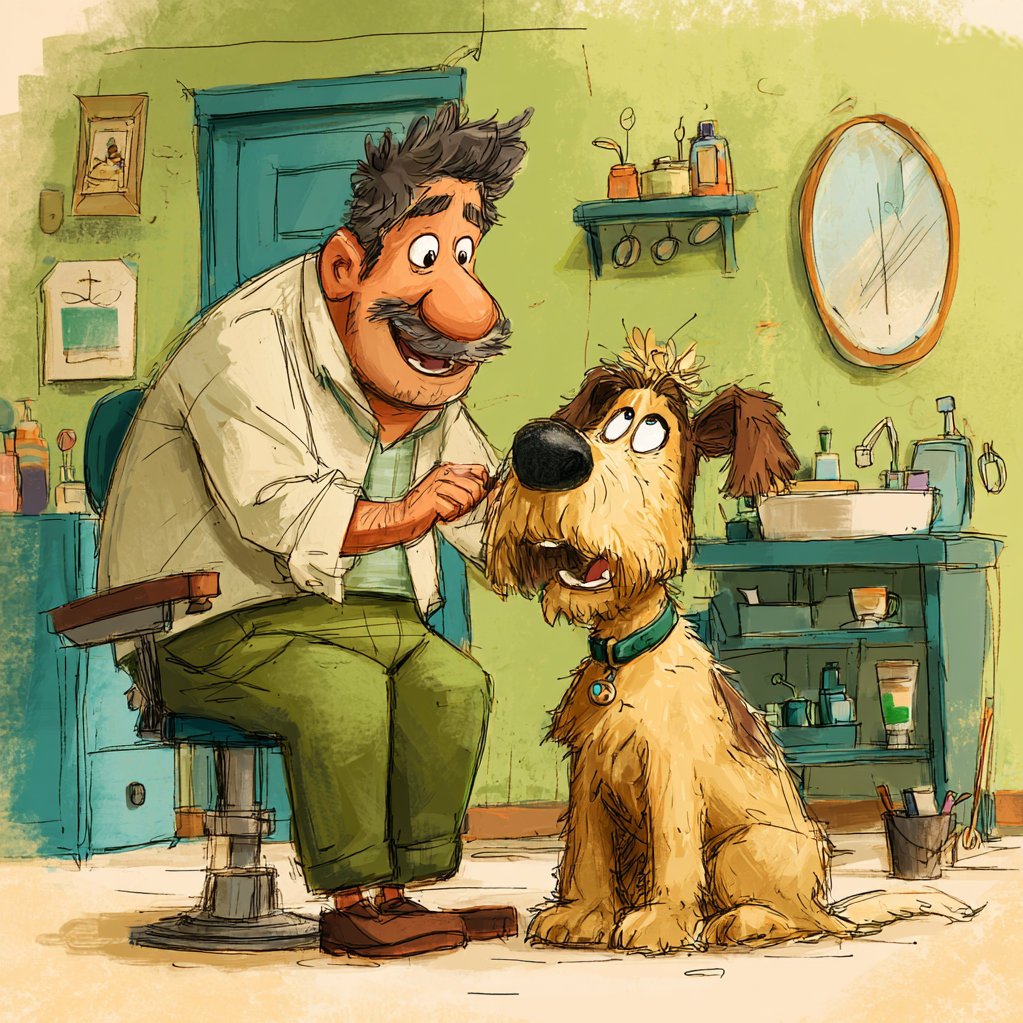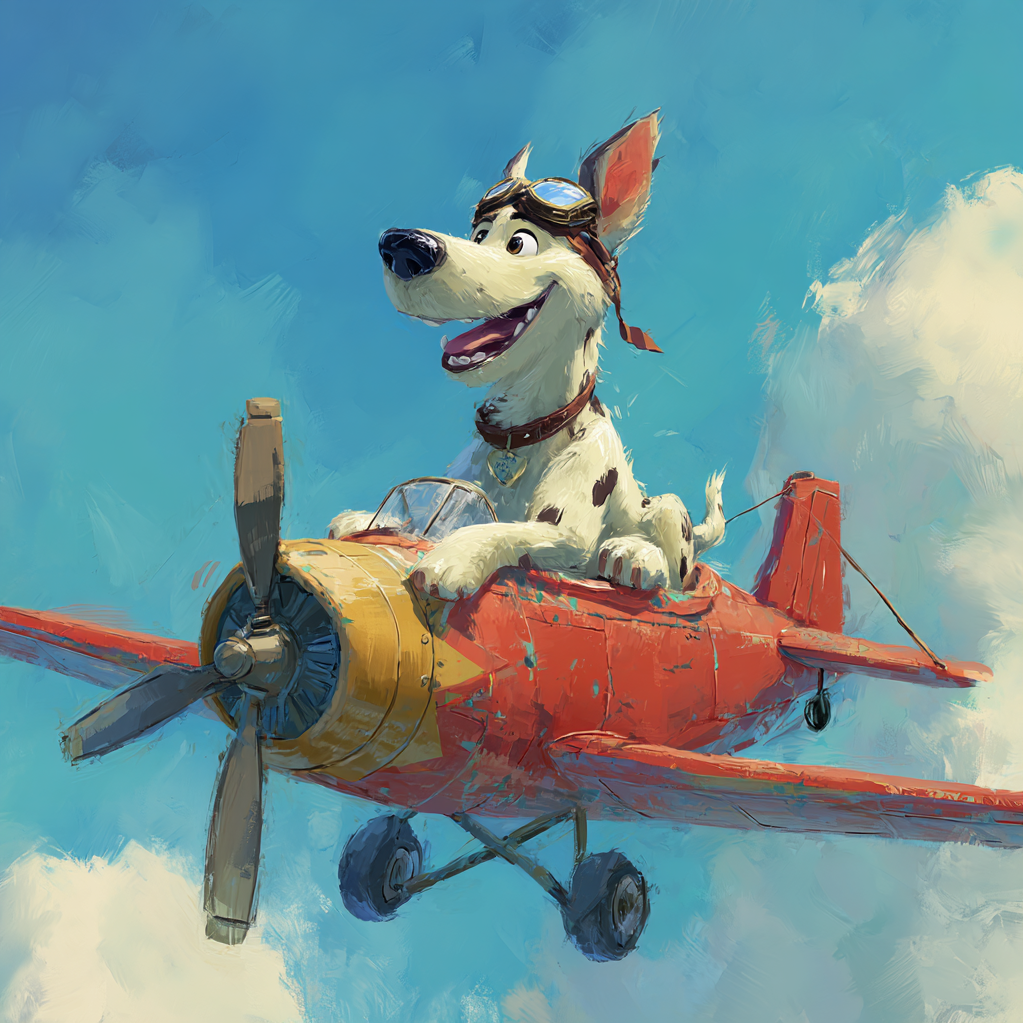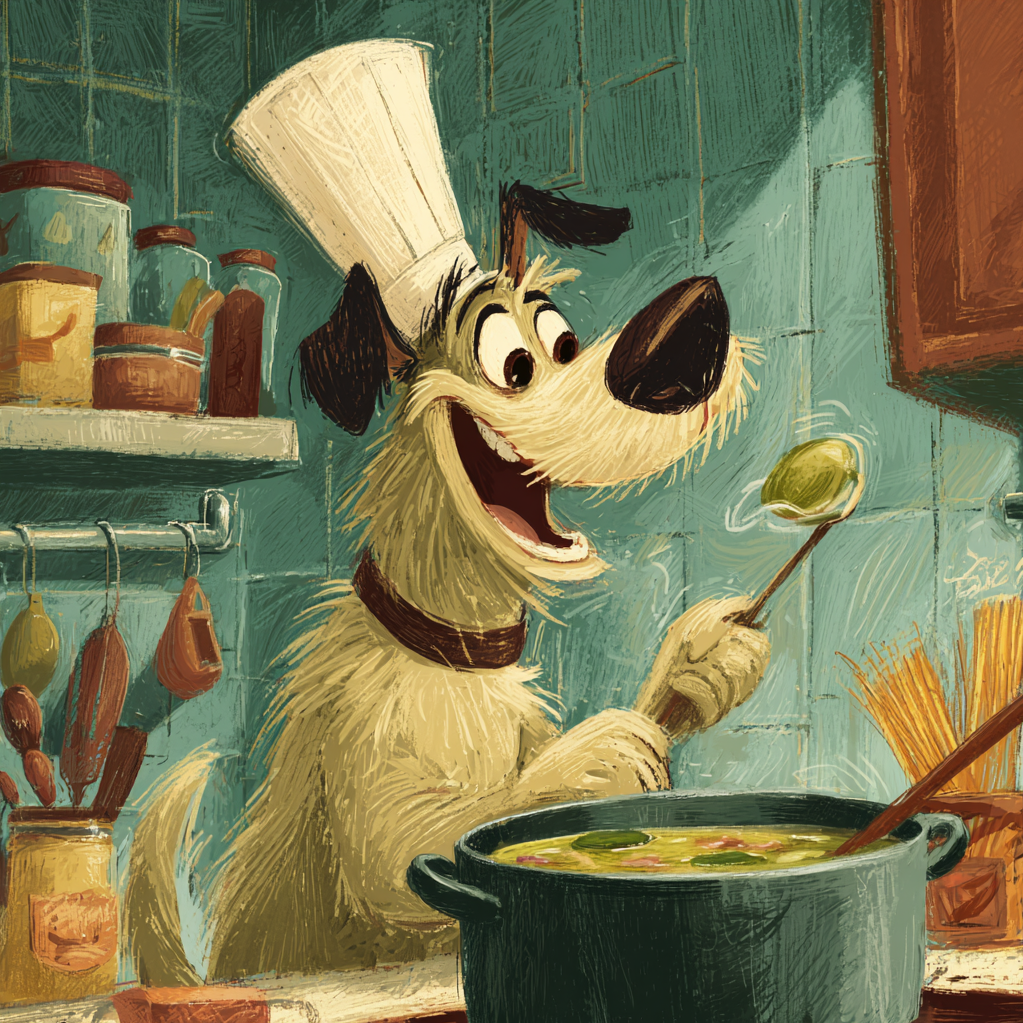Beyond the Wag: Decoding the Secret Language Written in Fur and Muscle
Picture a wolf. Not the cartoon villain, but the real apex predator: ears like radar dishes scanning tundra winds, tail held like a battle standard, muscles flowing like water under fur. Every twitch, every glance, every silent snarl is a survival telegram sent on frequencies we humans lost millennia ago. Now look at your dog. That tail thumping against your leg? Those ears flicking at a distant siren? That deep, rumbling growl at the delivery van? It’s not a simplified version of the wolf’s language. It’s the exact same ancient, urgent code. We domesticated their bodies, but we never rewired their primal lexicon. To truly understand your dog – to prevent bites, ease anxieties, and deepen your bond beyond treats and commands – you need to become fluent in the silent symphony written in their posture, ears, eyes, and tail. Forget thinking they speak “human-lite.” They speak Wolf. And it’s time you learned.**

The Tail: It’s Not Just a Happiness Meter (It’s a Complex Emotional Barometer)
Myth Buster: A wagging tail does not automatically mean “I’m happy!” It means arousal. Excitement, agitation, nervousness, even impending aggression – they all get the tail moving. The devil is in the details:
- The Helicopter Wag: Wide, loose, sweeping circles, often involving the whole hindquarters. This is genuine, full-body joy. You see it when they greet their favorite human after an absence, during unrestrained play with a trusted friend. The body is loose, wiggly, relaxed.
- The High, Stiff Flag: Tail held rigidly high, often vibrating slightly or wagging in short, rapid, tense strokes. This is intense arousal, alertness, and potential challenge. It signals confidence, maybe even dominance. “I see you. I am aware. I am ready.” Common when confronting an unfamiliar dog, guarding a resource, or intensely focused on prey. Proceed with caution.
- The Low, Slow Wag: Tail held below spine level, wagging in hesitant, sweeping motions. This signals insecurity, appeasement, or nervousness. “I’m not a threat, please don’t hurt me.” Often accompanied by a slightly lowered body, avoiding direct eye contact. Don’t confuse appeasement with friendliness; this dog is stressed.
- The Tucked Tail: Tail clamped tightly between the hind legs, covering the belly. This is pure fear, anxiety, or submission. “I am terrified. Please leave me alone.” It’s a desperate attempt to protect vulnerable areas and appear smaller. Forcing interaction on a dog showing this is asking for trouble (a fear bite).
- The Still Tail: A tail held completely motionless, especially if mid-height or high, is a major red flag. This often precedes aggression. It indicates intense focus and potential readiness to act. Combined with a stiff body and fixed stare, it’s a clear warning: “Back off. Now.”
Remember: Always look at tail position first, then motion, and crucially, the rest of the body. A high, stiff wag with a rigid body and fixed stare is worlds apart from a loose, wiggly helicopter wag.
The Ears: Radars Tuned to Emotion
Dog ears are incredibly mobile antennae, broadcasting internal states with astonishing clarity. Forget breed limitations (floppy ears still try to move!); focus on position and tension:
- Ears Forward & Pricked: Maximizing sound collection. Signals intense interest, alertness, curiosity, or confidence. “What’s that? I’m focused!” Common when hunting, playing, or investigating something novel.
- Ears Flattened/Sideways (“Airplane Ears”): Ears held out to the sides, often slightly back. Signals significant stress, anxiety, fear, or appeasement. “I’m really uncomfortable, please don’t approach.” A common sign in vet clinics, during storms, or when feeling threatened. Not aggression, but a plea for space.
- Ears Pinned Tightly Back Against the Head: Pressed flat against the skull. Signals extreme fear, terror, or defensive aggression. “I am terrified and might bite to protect myself.” This is a high-stress signal demanding immediate de-escalation and space. Often seen with a tucked tail and crouched body.
- Ears Constantly Flicking/Rotating: Scanning the environment rapidly. Signals heightened awareness, nervousness, or uncertainty. “I’m trying to process everything; something feels off.” Can indicate mild anxiety or hypervigilance.
The Eyes: Windows to the Canine Soul (and Stress Levels)
The eyes reveal volumes about a dog’s emotional state and intentions. Look beyond the “puppy dog eyes” cliché:
- Soft Eyes: Relaxed muscles around the eyes, normal blinking rate. Eyes may appear slightly “squinty” or almond-shaped. Signals calmness, contentment, relaxation, and friendliness. The look of a truly happy, comfortable dog.
- Hard Eyes/Whale Eye: Eyes wide open, showing an unusual amount of the white sclera (the “whites of the eyes”), often combined with a stiff head turned slightly away. Signals significant stress, anxiety, fear, or potential aggression. “I am very uncomfortable and might snap if pushed.” This is a major warning sign. The dog feels trapped or threatened.
- Fixed, Intense Stare: Unblinking, direct eye contact held for more than a few seconds. Signals a high level of arousal, challenge, or predatory focus. In play between familiar dogs, it can be part of the game. Directed at a person or unfamiliar dog, it’s a serious threat: “I am focused on you as a potential challenge or target.” Never engage in a staring contest with a tense dog.
- Avoiding Eye Contact/Averting Gaze: Deliberately looking away. Signals appeasement, submission, or discomfort. “I am not a threat; please don’t confront me.” A polite canine way to diffuse tension. Respect it.
- Rapid Blinking or Lip Licking (without food): Often subtle signs. Signal stress, anxiety, or nervousness. “I’m feeling a bit overwhelmed.” Calming signals used to self-soothe or communicate peaceful intent.
The Body: The Full Story Written in Posture and Tension
The overall body posture and muscle tension tell the most comprehensive story, integrating the signals from the tail, ears, and eyes:
- Loose and Wiggly: Body fluid, muscles relaxed, might involve full-body wiggles or play bows. Signals happiness, playfulness, friendliness, and relaxation. This is the ultimate “safe and happy” posture.
- Weight Forward/Stiff: Body leaning forward, muscles tense, neck extended. Signals intense interest, arousal, potential predatory focus, or offensive aggression. “I am engaged and ready to move towards this thing.” Can be part of play or precede a chase or attack. Context is key.
- Weight Back/Crouched/Lowered: Body leaning away or sinking towards the ground, muscles tense. Signals fear, anxiety, stress, or defensive aggression. “I want to get away from this; I feel threatened.” This dog feels unsafe and may bite if cornered or pressured.
- Frozen/Stillness: Complete lack of movement, like a statue. Signals extreme tension, fear, or preparation for action (fight or flight). Often precedes a bite or a sudden bolt. A very dangerous state. Do not approach.
- Raised Hackles (Piloerection): Hair standing up along the spine, from neck to tail. Signals arousal, excitement, fear, aggression, or feeling threatened. It’s an involuntary reflex making the dog look bigger. Not inherently aggressive, but always indicates heightened emotion. Look at the whole picture – raised hackles with a wagging tail and play bow is excitement; with a growl and stiff body is aggression.
- Rolling Over/Exposing Belly: Can mean two VERY different things:
- Active Belly Rub Request: Relaxed body, soft eyes, maybe a wagging tail. “Scratch me, I trust you!” True submission/appeasement is different.
- Passive Submission/Appeasement: Tense body, avoiding eye contact, ears back, tail tucked. “Please don’t hurt me, I surrender!” Do not force belly rubs on a dog showing this. Respect their need for space.
Putting It All Together: The Symphony of Signals
The magic (and the challenge) lies in synthesis. You never read a single signal in isolation. A wagging tail means nothing without seeing the ears and body tension. Whale eye with a lowered body screams fear; whale eye with a stiff forward stance screams aggression.
Scenario 1: The Friendly Greeter
- Body: Loose, wiggly, maybe a play bow.
- Tail: Helicopter wag, mid-height or lower.
- Ears: Relaxed, maybe forward or slightly back in soft breeds.
- Eyes: Soft, squinty, blinking normally.
- Mouth: Relaxed, maybe slightly open (“smiling”), panting softly.
- Verdict: “I’m happy and friendly! Let’s interact!”
Scenario 2: The Anxious Observer
- Body: Slightly lowered, tense, weight shifted back.
- Tail: Low, slow wag or tucked.
- Ears: Flattened sideways (“airplane ears”).
- Eyes: Avoiding direct contact, whale eye possible.
- Mouth: Closed, lip licking, maybe yawning.
- Verdict: “I’m very uncomfortable. Please give me space. I don’t want trouble.”
Scenario 3: The Dog Saying “Back Off!”
- Body: Stiff, rigid, weight forward or leaning away (depending on offensive/defensive), frozen.
- Tail: High and stiff (flagging) or completely still.
- Ears: Pinned tightly back or intensely forward and rigid.
- Eyes: Hard, fixed stare, whale eye.
- Mouth: Lips pulled back (snarl), teeth possibly bared, deep growl.
- Verdict: “I feel threatened. I will bite if you come closer. LEAVE NOW.” Heed this warning immediately.
Becoming Fluent: The Lifelong Conversation
Learning canine body language isn’t about memorizing a cheat sheet. It’s about cultivating observation. Watch your dog constantly. Watch dogs at the park (from a distance). Watch videos. Notice the subtle shifts in muscle, the flick of an ear, the slight tightening around the eyes before the growl. It’s a language of nuance and context, spoken in the milliseconds between a trigger and a reaction.
Respect the signals. If a dog says “I’m scared” (lowered body, tucked tail, whale eye), believe them. Don’t force interaction. Give them space. Pushing a fearful dog is how bites happen. If a dog says “Go away!” (stiff body, growl, fixed stare), obey. Retreat calmly. Your safety depends on it.
This fluency isn’t about dominance; it’s about empathy. It’s about understanding the wolf still whispering inside your domesticated companion. It’s about seeing the world through their senses, interpreting their fears and joys written in the elegant, ancient grammar of posture and expression. When you learn to read the silent symphony of fur and muscle, you don’t just understand your dog better. You unlock a deeper trust, prevent misunderstandings, and finally hear the profound, wordless conversation they’ve been trying to have with you all along. Listen with your eyes. The truth is written all over them.




